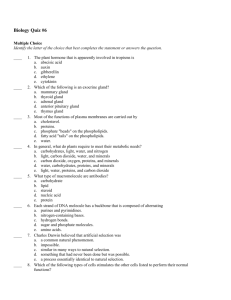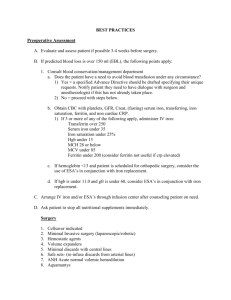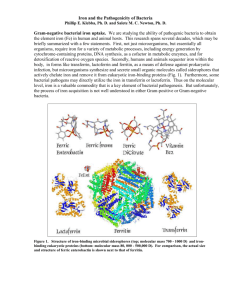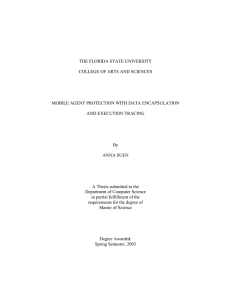Understanding How the Ring-Doughnut Structure of Encapsulated
advertisement
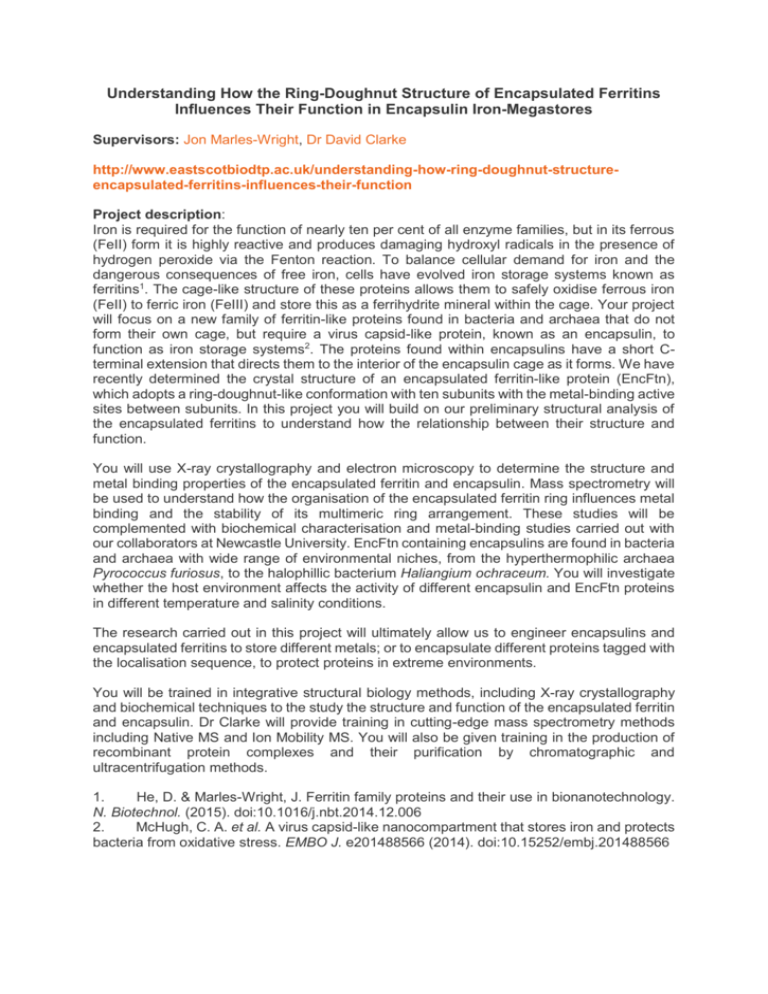
Understanding How the Ring-Doughnut Structure of Encapsulated Ferritins Influences Their Function in Encapsulin Iron-Megastores Supervisors: Jon Marles-Wright, Dr David Clarke http://www.eastscotbiodtp.ac.uk/understanding-how-ring-doughnut-structureencapsulated-ferritins-influences-their-function Project description: Iron is required for the function of nearly ten per cent of all enzyme families, but in its ferrous (FeII) form it is highly reactive and produces damaging hydroxyl radicals in the presence of hydrogen peroxide via the Fenton reaction. To balance cellular demand for iron and the dangerous consequences of free iron, cells have evolved iron storage systems known as ferritins1. The cage-like structure of these proteins allows them to safely oxidise ferrous iron (FeII) to ferric iron (FeIII) and store this as a ferrihydrite mineral within the cage. Your project will focus on a new family of ferritin-like proteins found in bacteria and archaea that do not form their own cage, but require a virus capsid-like protein, known as an encapsulin, to function as iron storage systems2. The proteins found within encapsulins have a short Cterminal extension that directs them to the interior of the encapsulin cage as it forms. We have recently determined the crystal structure of an encapsulated ferritin-like protein (EncFtn), which adopts a ring-doughnut-like conformation with ten subunits with the metal-binding active sites between subunits. In this project you will build on our preliminary structural analysis of the encapsulated ferritins to understand how the relationship between their structure and function. You will use X-ray crystallography and electron microscopy to determine the structure and metal binding properties of the encapsulated ferritin and encapsulin. Mass spectrometry will be used to understand how the organisation of the encapsulated ferritin ring influences metal binding and the stability of its multimeric ring arrangement. These studies will be complemented with biochemical characterisation and metal-binding studies carried out with our collaborators at Newcastle University. EncFtn containing encapsulins are found in bacteria and archaea with wide range of environmental niches, from the hyperthermophilic archaea Pyrococcus furiosus, to the halophillic bacterium Haliangium ochraceum. You will investigate whether the host environment affects the activity of different encapsulin and EncFtn proteins in different temperature and salinity conditions. The research carried out in this project will ultimately allow us to engineer encapsulins and encapsulated ferritins to store different metals; or to encapsulate different proteins tagged with the localisation sequence, to protect proteins in extreme environments. You will be trained in integrative structural biology methods, including X-ray crystallography and biochemical techniques to the study the structure and function of the encapsulated ferritin and encapsulin. Dr Clarke will provide training in cutting-edge mass spectrometry methods including Native MS and Ion Mobility MS. You will also be given training in the production of recombinant protein complexes and their purification by chromatographic and ultracentrifugation methods. 1. He, D. & Marles-Wright, J. Ferritin family proteins and their use in bionanotechnology. N. Biotechnol. (2015). doi:10.1016/j.nbt.2014.12.006 2. McHugh, C. A. et al. A virus capsid-like nanocompartment that stores iron and protects bacteria from oxidative stress. EMBO J. e201488566 (2014). doi:10.15252/embj.201488566


